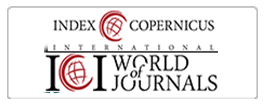Determinan Dari Niat Investasi Saham Syariah: Perspektif Toleransi Maghrib
DOI:
https://doi.org/10.22219/jaa.v5i3.22838Keywords:
Attitudes, Perceived Behavioral Control, Sharia Investment Intentions, Subjective NormsAbstract
Islamic finance is a sharia-compliant business sector. The factor of religion or sharia compliance is very important to encourage the intention of Muslims to use Islamic financial products. The failure of Islamic financial products to comply with sharia principles has become a major barrier for investors. This leads to the purpose of this paper to reveal the determinants of investment intentions in Islamic stocks with the perspective of MAGHRIB tolerance regulated by the OJK. Sample data from 200 respondents were collected from students of the Economics and Business Faculty at Wiraraja University, Madura University, and Trunojoyo University using purposive sampling method and the data were analyzed using multiple linear regression techniques. The Theory of Planned Behavior is used as the basic framework in which the MAGHRIB tolerance becomes a consensus to test attitudes, subjective norms, and perceived behavioral control on Islamic stock investment intentions. The results showed that MAGHRIB tolerance had a significant relationship consisting of attitudes, subjective norms, perceived behavioral control on Islamic stock investment intentions. The findings of this study can be useful for increasing investment in Indonesia, especially for students to start investing in Islamic stocks.
Downloads
References
Ajzen, I. (1991). The Theory of Planned Behavior. ORGANIZATIONAL BEHAVIOR AND HUMAN DECISION PROCESSES, 50(2), 179–211.
Akhtar, F., & Das, N. (2019). Predictors of investment intention in Indian stock markets: Extending the theory of planned behaviour. International Journal of Bank Marketing, 37(1), 97–119. https://doi.org/10.1108/IJBM-08-2017-0167
Al-sultan, W. (1999). Financial characteristics of interest-free banks and conventional banks. University of Wollongong Research Online, 1–241. https://ro.uow.edu.au/theses/1019/
Alleyne, P., & Broome, T. (2011). Using the theory of planned behaviour and risk propensity to measure investment intentions among future investors Auditor independence in the Caribbean View project Whistle blowing by external audit staff View project. University of the West Indies, March 2016. https://www.researchgate.net/publication/299483632
Amin, H., Rahim, A., Rahman, A., & Abdul Razak, D. (2014). Consumer acceptance of islamic home financing. International Journal of Housing Markets and Analysis, 7(3), 307–332. https://doi.org/10.1108/IJHMA-12-2012-0063
Astuti, S.W.W. (2021). Persepsi mahasiswa terhadap kesyariahan produk pegadaian syariah. Jurnal Akademi Akuntansi, 4(1). https://doi.org/DOI: https://doi.org/10.22219/jaa.v4i1.15992
Damayanti. (2015). Analisis Kepatuhan Wajib Pajak: Tinjauan Berdasarkan Teori Perilaku Terencana dan Teori Psikologi Fiskal dengan Orientasi Ketidakpastian dan Orientasi Religiusitas sebagai Variabel Moderasi. http://repository.ub.ac.id/id/eprint/160393
Derigs, U., & Marzban, S. (2008). Review and analysis of current Shariah-compliant equity screening practices. International Journal of Islamic and Middle Eastern Finance and Management, 1(4), 285–303. https://doi.org/10.1108/17538390810919600
Dinç Aydemir, S., & Aren, S. (2017). Do the effects of individual factors on financial risk-taking behavior diversify with financial literacy? Kybernetes, 46(10), 1706–1734. https://doi.org/10.1108/K-10-2016-0281
Dow, J. P. (2018). Attitudes towards credit after the Great Recession. Applied Economics Letters, 25(4), 254–257. https://doi.org/10.1080/13504851.2017.1316817
Foltz, B. B., Newkirk, H. E., & Schwager, P. H. (2016). An empirical investigation of factors that influence individual behavior toward changing social networking security settings. Journal of Theoretical and Applied Electronic Commerce Research, 11(2), 1–15. https://doi.org/10.4067/S0718-18762016000200002
Ganiarto, E., Komalasari, F., & Monita Manik, L. E. L. (2021). Novice Investor Behavior in Indonesia Stock Exchange: a Comparative Study Before and During Covid-19 Pandemic. FIRM Journal of Management Studies, 6(1), 107. https://doi.org/10.33021/firm.v6i1.1441
Haque, A. (2010). Islamic banking in Malaysia: A study of attitudinal differences of Malaysian customers. European Journal of Economics, Finance and Administrative Sciences, 18, 7–18.
Hasbullah, N. A., Osman, A., Abdullah, S., Salahuddin, S. N., Ramlee, N. F., & Soha, H. M. (2016). The Relationship of Attitude, Subjective Norm and Website Usability on Consumer Intention to Purchase Online: An Evidence of Malaysian Youth. Procedia Economics and Finance, 35(October 2015), 493–502. https://doi.org/10.1016/s2212-5671(16)00061-7
Ibrahim, Y., & Arshad, I. (2017). Examining the impact of product involvement, subjective norm and perceived behavioral control on investment intentions of individual investors in Pakistan. Investment Management and Financial Innovations, 14(4), 181–193. https://doi.org/10.21511/imfi.14(4).2017.15
Jaffar, M. A., & Musa, R. (2016). Determinants of Attitude and Intention towards Islamic Financing Adoption among Non-Users. Procedia Economics and Finance, 37(December), 227–233. https://doi.org/10.1016/s2212-5671(16)30118-6
Lehrer, E. L. (2004). Religion as a determinant of economic and demographic behavior in the United States. Population and Development Review, 30(4), 707–726. https://doi.org/10.1111/j.1728-4457.2004.00038.x
McDaniel, S. W., & Burnett, J. J. (1990). Consumer religiosity and retail store evaluative criteria. Journal of the Academy of Marketing Science, 18(2), 101–112. https://doi.org/10.1007/BF02726426
Muslim, M. (2020). Moh . Muslim : “ PHK pada Masa Pandemi Covid-19 ” 358. ESENSI: Jurnal Manajemen Bisnis, 23(3), 357–370. https://www.worldometers.info/coronavirus
Ningtyas, M. N., & Istiqomah, D. F. (2021). Perilaku Investasi sebagai penerapan gaya hidup halal masyarakat Indonesia: tinjauan Theory of Planned Behavior. Jurnal Ekonomi Modernisasi, 17(2), 158–172. https://doi.org/10.21067/jem.v17i2.5642
Nisa, K. (2021). Dampak Minimnya literasi Keuangan.
Oktavendi, T. W. (2020). Islamic Financial Technology Usage: An Investing Perspectives On Generation Z. Riset Akuntansi Dan Keuangan Indonesia, 5(2), 151–158. https://doi.org/10.23917/reaksi.v5i2.10100
Onasie, V., & Widoatmodjo, S. (2020). Niat Investasi Generasi Milenial Di Pasar Modal. Jurnal Manajerial Dan Kewirausahaan, 2(2), 318. https://doi.org/10.24912/jmk.v2i2.7924
Paramita, R. S., Isbanah, Y., Kusumaningrum, T. M., Musdholifah, M., & Hartono, U. (2018). Young investor behavior: implementation theory of planned behavior. International Journal of Civil Engineering and Technology, 9(7), 733–746.
Peter, O., & Olson, J. C. (1996). Consumer Behavior and Strategic Management. Erlangga.
Qtaishat, N. M. (2021). The effect of covid-19 pandemic on consumer online purchasing behavior. WSEAS Transactions on Business and Economics, 18, 865–874. https://doi.org/10.37394/23207.2021.18.82
Rahman, A. A., Yahya, A. M., & Nasir, H. M. (2010). Islamic norms for stock screening: A comparison between the Kuala Lumpur Stock Exchange Islamic Index and the Dow Jones Islamic Market Index. International Journal of Islamic and Middle Eastern Finance and Management, 3(3), 228–240. https://doi.org/10.1108/17538391011072426
Raut, R.K. and Das.N. (2017). Individual investors ’ attitude towards online stock trading : some evidence from a developing country Rajdeep Kumar Raut * and Niladri Das. 14, 254–267.
Ruiz-Rosa, I., Gutiérrez-Taño, D., & García-Rodríguez, F. J. (2020). Social entrepreneurial intention and the impact of COVID-19 pandemic: A structural model. Sustainability (Switzerland), 12(17), 9–12. https://doi.org/10.3390/SU12176970
Saratian, E. T. P, Soelton, M, Mugiono, M, Muhtadin, M. (2019). Knowledge Of “Maghrib” (Maysir, Gharar And Riba) For The Halal Transaction Of The Community. Journal International Conference on Community Development, 7(2), 72–81.
Soedirman, U. J. (2022). 2022) Factors Affecting The Use Of Digital Financial Services Among Moslems: An Attempt To Extend The Technology Acceptan ce Model. August. https://doi.org/10.22219/jrak.v12i1.18151
Stajkovic, A. D., & Luthans, F. (1998). Social cognitive theory and self-efficacy: Goin beyond traditional motivational and behavioral approaches. Organizational Dynamics, 26(4), 62–74. https://doi.org/10.1016/s0090-2616(98)90006-7
Tarmizi, E. (2019). Harta haram muamalat kontemporer. BMI Publishing.
Venkatesh, V., Thong, J. y. ., & Xu, X. (2012). Consumer Acceptance and Use of Information Technology: Extending the Unified Theory of Acceptance and Use of Technology by Viswanath Venkatesh, James Y.L. Thong, Xin Xu :: SSRN. 36(1), 157–178. https://papers.ssrn.com/sol3/papers.cfm?abstract_id=2002388
wiratmini. (2020). Populasi Muslim Indonesia Besar tapi Literasi Keuangan Syariah Minim.
Downloads
Published
Issue
Section
License
Copyright (c) 2022 Ustman Ustman, Subhan Subhan, Rohmaniyah Rohmaniyah

This work is licensed under a Creative Commons Attribution-NonCommercial-ShareAlike 4.0 International License.
Jurnal Akademi Akuntansi is licensed under a Creative Commons Attribution-NonCommercial-ShareAlike 4.0 International License.
Authors who publish with this journal agree to the following terms:
- Authors retain copyright and grant the journal right of first publication with the work simultaneously licensed under a Creative Commons Attribution-NonCommercial-ShareAlike 4.0 International License that allows others to share the work with an acknowledgment of the work's authorship and initial publication in this journal.
- Authors are able to enter into separate, additional contractual arrangements for the non-exclusive distribution of the journal's published version of the work (e.g., post it to an institutional repository or publish it in a book), with an acknowledgment of its initial publication in this journal.
- Authors are permitted and encouraged to post their work online (e.g., in institutional repositories or on their website) prior to and during the submission process, as it can lead to productive exchanges, as well as earlier and greater citation of published work (See The Effect of Open Access).
Jurnal Akademi Akuntansi dilisensikan di bawah lisensi Creative Commons Attribution-NonCommercial-ShareAlike 4.0 International.
Penulis yang menerbitkan artikel di jurnal ini menyetujui ketentuan berikut:
- Penulis mempertahankan hak cipta dan memberikan hak jurnal atas publikasi pertama dengan karya yang secara serentak dilisensikan di bawah Lisensi Pengaitan Creative Commons yang memungkinkan orang lain untuk berbagi karya dengan pengakuan atas karya penulis dan publikasi awal dalam jurnal ini.
- Penulis dapat masuk ke dalam pengaturan kontrak tambahan yang terpisah untuk distribusi non-eksklusif versi karya jurnal yang diterbitkan (misalnya, mempostingnya ke repositori institusional atau mempublikasikannya dalam sebuah buku), dengan pengakuan publikasi awalnya di jurnal ini.
- Penulis diizinkan dan didorong untuk memposting pekerjaan mereka secara online (misalnya, di repositori institusional atau di situs web mereka) sebelum dan selama proses pengajuan, karena dapat mengarah pada pertukaran produktif, serta kutipan pekerjaan sebelumnya dan yang lebih besar (Lihat Pengaruh Akses Terbuka).
























